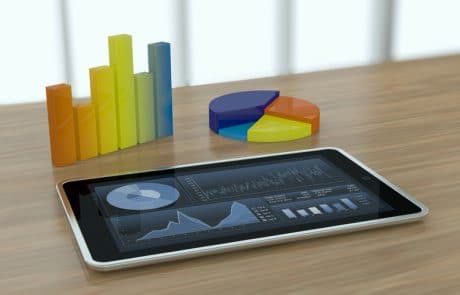5 Intriguing Ways to Better Marketing Using Big Data
Marketing is the art and science of leading a potential customer to become an actual one. From the “hawkers” in Medieval marketplaces to the latest digital strategies, businesses, politicians, and organizations have looked for ways to attract, engage, and “make that sale.”
The art of marketing has involved creativity, entertainment, inspiration, and appeal to a myriad of human emotions.
It has not been unusual for companies to use a behavior analyst to understand how to craft ads that appeal to emotions. You only need to watch the Super Bowl commercials each year to see extreme creativity in action.
The science of marketing is rapidly becoming far more important than the “art,” and, quite quickly, it is becoming the driver of all that marketers do.
It began with basic analytics that allows marketers to determine what works and what does not with their targeted audiences. Thus, strategies and tactics can be modified and improved after the fact. But even this activity is fast taking a back seat to newer technology aimed to help you understand how to improve marketing using data science.
Table of Contents
What Is Data Science and Who Is Using It?

Data science is simply the use of large amounts of data to make decisions.
What makes data science so valuable is that it can gather, sort, aggregate, and spit out reports that have organized all of that data based on the needs of the individual or an organization.
Big data analytics has both commercial and non-commercial uses. To give you some background, consider the following users of data science:
Political Campaigns
Political campaigns have jumped on the use of big data analytics. It actually began in 2012 with the Obama campaign. Gathering historical voter data, algorithms were developed that provided the key metrics of how certain demographics would probably vote.
This is known as predictive analytics¸ and it allowed the campaign to make decisions about what demographics to “court,” which might be able to be influenced and which were “hopeless.” Using sophisticated software systems that gathered, sorted, and provided an analysis of the data, the campaign was highly successful.
More recently, the Trump campaign contracted with a big data analytics firm that purported to collect, analyze, and provide psychographic information on voter demographics. This would give the campaign the information to launch a digital marketing campaign that would target potential Trump voters. The data provided a profile of the typical Trump voter, where they were, and how they might be courted.
E-Commerce Owners
Administrators and marketers have all embraced data-driven marketing because it takes the “guesswork” out of campaigns. And so, marketers are now using marketing data science to drive their decisions upfront and before any content is unleashed.
You can also take advantage of big data in the following cases:
- To identify the most profitable customers and understand what impacts their purchase behavior.
- Discover prospects that are most likely to churn/abandon a purchase.
- Detect and prevent credit card fraud.
- Build a smart product recommendation engine to manage the upsell/cross-sell campaigns.
Non-Profits and Public Institutions
These organizations are learning how to evaluate marketing data, so they know who to target and when, to meet their fundraising goals, etc.
The problem with company owners, executives, and marketing professionals is that they are not data science specialists.
Data scientists are the pros who develop the algorithms, see to it that the marketing data is collected correctly and that the generated reports answer critical information that will drive decisions. This is the job of data scientists, and the short answer is yes, you need one.
Data science in marketing is no longer an option. The only decision you have to make is whether you hire one on-staff, that can be pretty pricey, or whether you contract these functions out, a more cost-effective solution.
Whichever you choose, you need to understand the importance of data science and marketing that will let you gather data and make decisions upfront rather than after the fact.
How to Empower Digital Marketing with Data Science: Intriguing Examples

We now have the ability to gather huge amounts of data, not just from our own customers and potential customer bases, but from much larger potential bases and from all sorts of sources – social media, public records, and so on.
That data can then be analyzed based on the questions we ask. And these answers can be given before products, services, and marketing campaigns are developed. Here are 5 intriguing uses of big data to boost marketing and, ultimately, sales.
Using Big Data Analytics to Develop Products and Highly Targeted Marketing Campaigns
Consider the mortgage loan department of a bank for example.
If it can gather, aggregate, and synthesize data on the most popular mortgage products for several different demographics, think of what it can do with the reports that these big data analytics can offer. Lenders can literally develop products based on consumer need and desire and market those products to each specific targeted demographic.
In fact, 48% of marketers using big data analytics are doing so to analyze customer behaviors and develop targeted campaigns that address those behaviors. This is just one example of how to use data science in marketing analytics.
Here’s a more detailed case study showing exactly how you can increase customer loyalty and the average bill with predictive analytics.
Obtain and Use Real-Time Data for Better Marketing
Big data can produce information about circumstances and events in real-time, based on organizations’ requests, and allow marketers to tap into those situations to target consumers.
Red Roof Inn has lots of hotels close to airports. What it discovered was that huge numbers of travelers were stranded in airports when their flights were canceled. By “ordering up” big data on canceled flights in real-time, the hotel chain was able to target those travelers by targeting ad campaigns on mobile devices in those areas. In fact, the company has realized a 10% increase in revenue in those targeted areas.
This is something called micro-moments and you can leverage and capitalize on those with the help of data science.
Make Use of Big Data Within a Partnership
Here’s a unique way to improve targeted marketing with data analytics. The Weather Channel actually uses its data platforms to monitor the impact of weather on people’s’ emotions. It then uses analytics to predict consumer behaviors based on the weather in a specific area.
Advertisers are given this information so that they know when and where to target their marketing efforts. One such example is a partnership among the channel, Pantene, and Walgreens. When it was known that there would be periods of high humidity in certain parts of the country, Walgreens and Pantene would push advertising in those areas for anti-frizz hair products. They called the campaign the “hair cast.” And it led to a 10% increase in Pantene at Walgreens during a couple of summer months and a 4% increase in all hair care products at Walgreens.
Improve Customer Experience Using Data
All business owners are aware that user experience is more important than even pricing. For this reason, they stay focused on how to improve user experience on their sites, their mobile platforms, etc. There are plenty of “big boys” using big data to improve the user experience.
Amazon tracks every user’s access and search. It also collects and aggregates data from similar users who have conducted similar searches. As this data is sorted, Amazon is able to collect behavior patterns that will predict who may want or need specific products. This allows Amazon to market efficiently, but it also provides users with experiences that are valuable to them specifically.
Netflix is another example of providing a solid customer experience. Every interaction with a customer is recorded and tracked. Netflix’s algorithm then aggregates and sorts of user preferences. This allows the company to “push” customized messages to its users, making recommendations for movies/shows they may like.
This application of big data in marketing that is highly individualized sends a message to users that their wants and needs are important.
Boost Customer Loyalty
One of the most important keys to generating continued revenue streams is to have loyal customers who return – they are less expensive than acquiring new customers. Marketers can now learn how big data can improve marketing to existing customers and thus boost their loyalty. The examples of Amazon and Netflix above are certainly good ones, but there are other times when you may be able to do this as well.
Target has used big data to gain a profile of the purchases of women who may be pregnant based on their purchases during the early stages of pregnancy. They can then target these customers with discounts and specials of products they are likely to purchase during their pregnancies. The goal is to develop loyalty among that demographic so that, even after the baby is born, Target can become the “go-to” retailer for baby items too.
And here is how Costco recently used big data in a way that also increased customer loyalty. Like all big box stores, Costco tracks every purchase its customers make. When there was a recent scare with pitted fruit, the potential for listeria, Costco was able to send notification only to those members who had purchased such items.
These five intriguing examples should show you three things.
- As a recent blog post on the Kissmetrics site stated, “Data is the Voice of the Customer, Data Science is the Interpretation of that Voice.” Big data collection, aggregation, analysis, and synthesis can provide critical information about your marketing – who you should be marketing to and how you should be marketing to your current and potential customers (based on the consumption behaviors, needs, and wants).
- Big data analytics, customized for your needs, can allow you to make marketing decisions based on a factual analysis of historic consumer behavior and predictive analysis of what those consumers will find valuable. This information can be used to determine not just product/service viability, but how to design a proactive marketing strategy that will work.
- You need the expertise of a data scientist – one who can set up the customized algorithms you need and who can put the systems in place for you to have that data configured in a usable way.
If you are ready for big data science, then Romexsoft is ready to make it happen for you within the Big Data Services. You do not need to hire a full-time data scientist. We can provide a team to put the systems in place that will ensure you are able to use data science and get that competitive edge.
Written by Romexsoft on October 12, 2017 (edited 2019)


